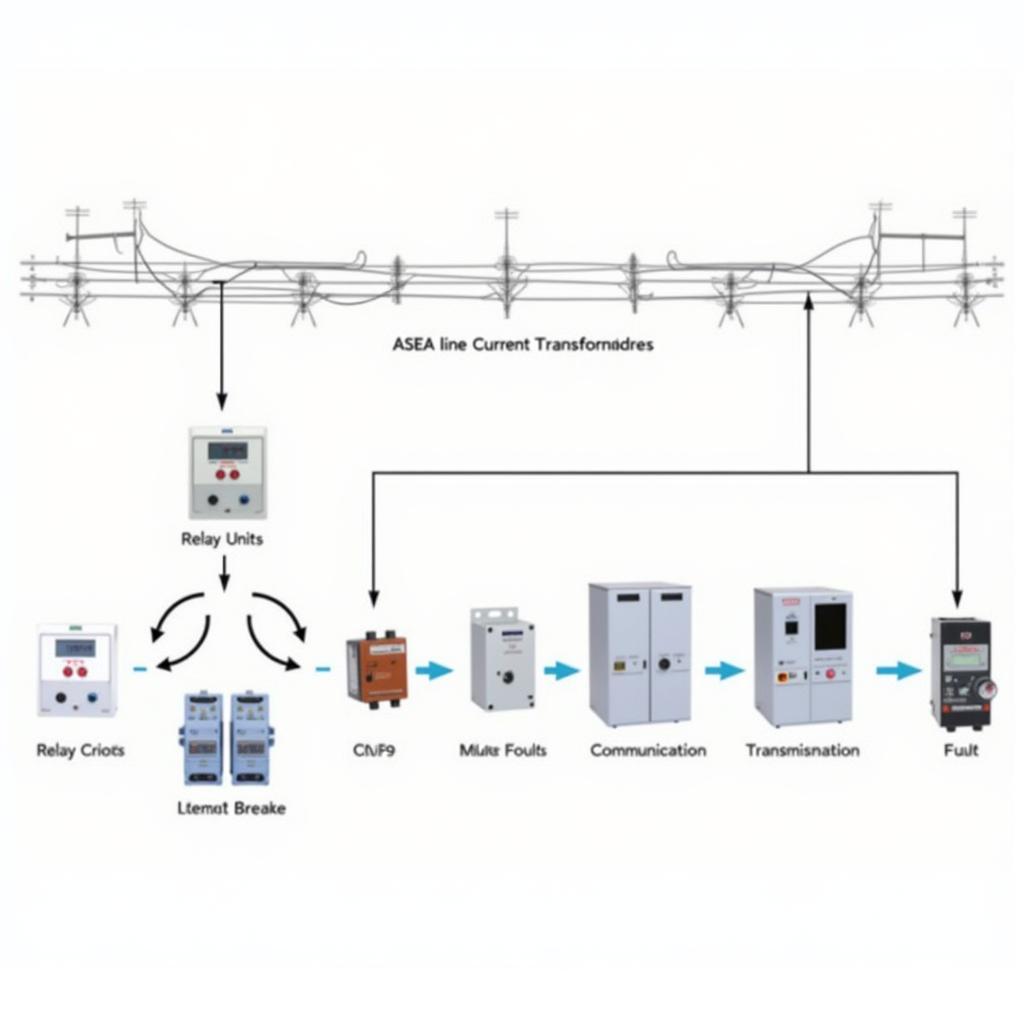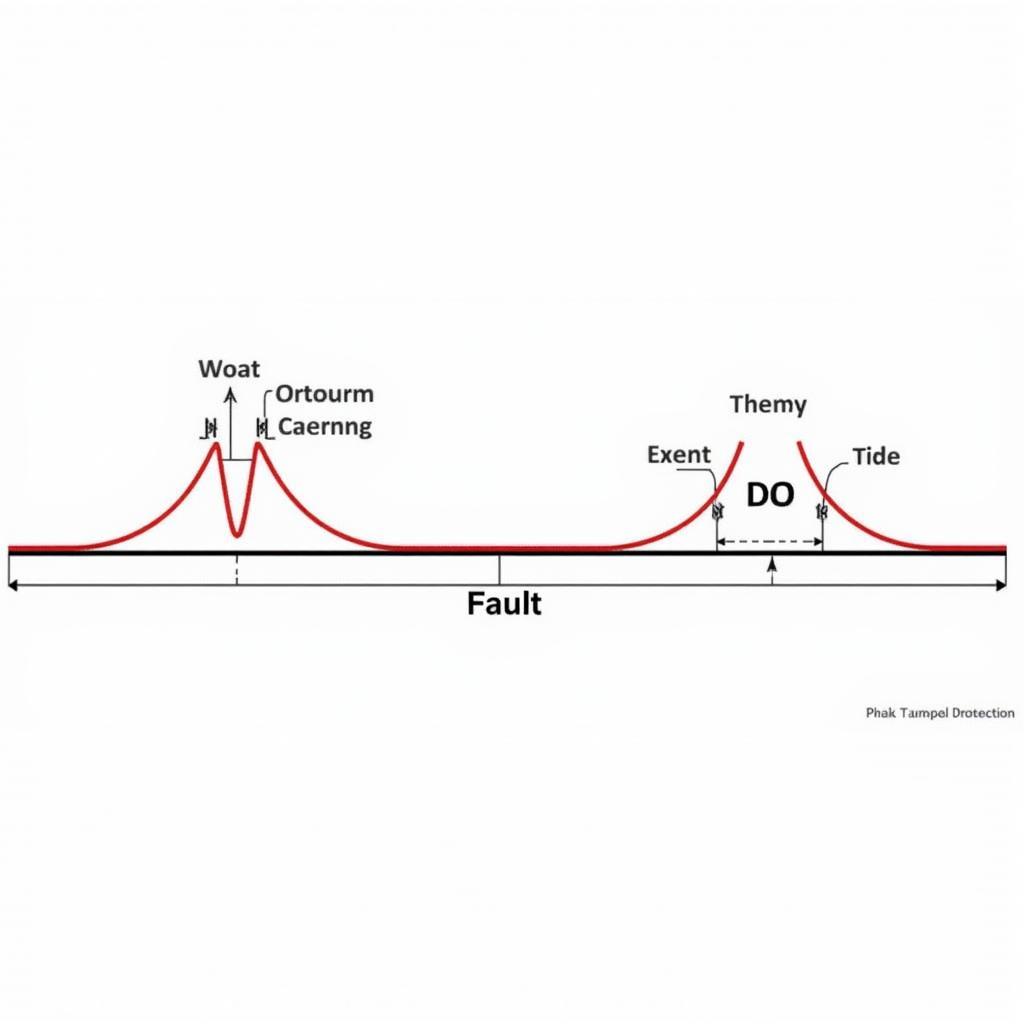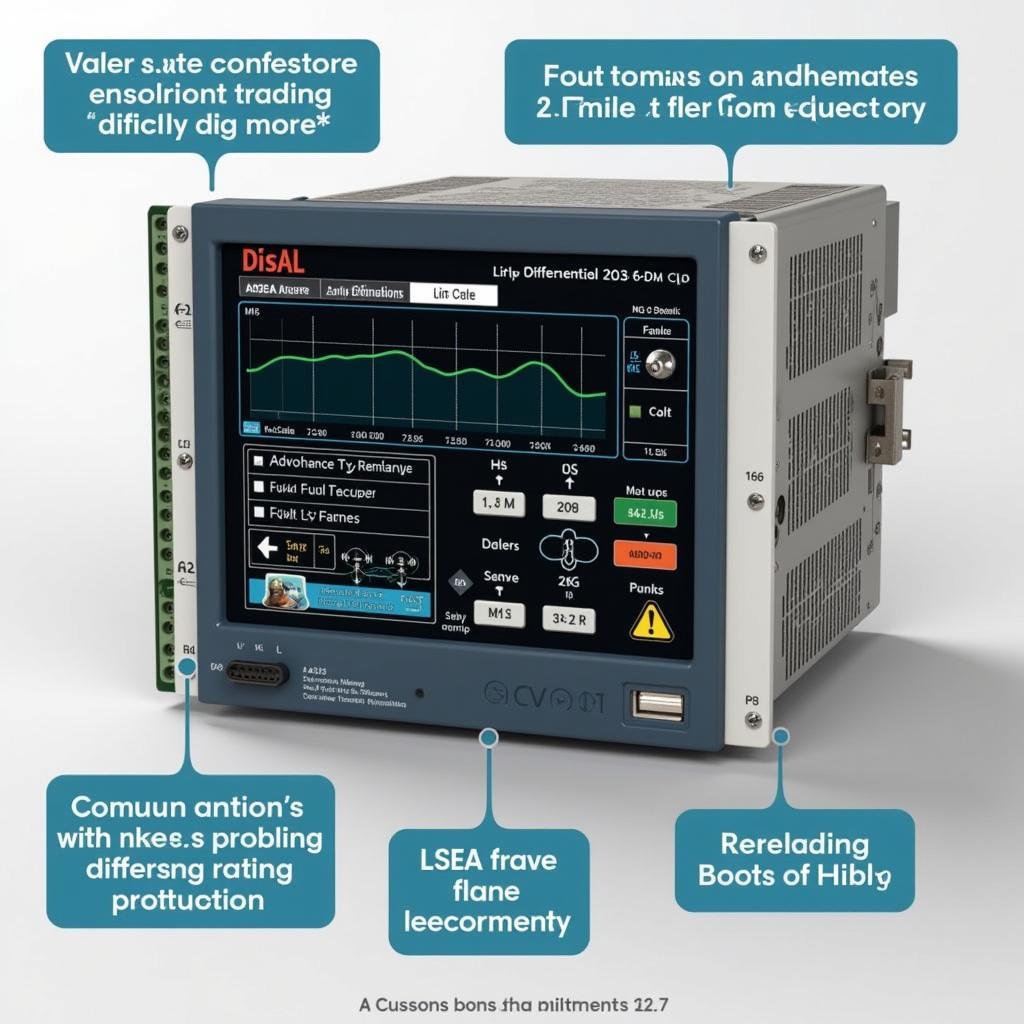Asea Line Differential Protection is a critical component of power system protection, specifically designed to safeguard transmission lines from faults. This sophisticated system relies on comparing current magnitudes and phase angles at both ends of a protected line. By continuously monitoring these parameters, it can quickly detect and isolate faults, minimizing potential damage and ensuring the stability of the power grid.
 ASEA Line Differential Protection System Diagram
ASEA Line Differential Protection System Diagram
How ASEA Line Differential Protection Works
The fundamental principle behind ASEA line differential protection lies in Kirchhoff’s current law, which states that the sum of currents entering a node must equal the sum of currents leaving it. In the context of a transmission line, this implies that under normal operating conditions, the currents measured at both ends should be identical, considering the transformer ratios.
When a fault occurs within the protected zone of the line, this current balance is disrupted. The fault current flows from the source side to the fault location and returns through the ground or a parallel path back to the source. This results in a difference between the currents measured at the line’s two ends. ASEA line differential relays, installed at each end, constantly monitor these currents. Upon detecting a significant discrepancy, exceeding a predetermined threshold, the relays swiftly trip the circuit breakers at both ends, isolating the faulted line section from the rest of the grid.
 Differential Protection Response to Line Fault
Differential Protection Response to Line Fault
Advantages of ASEA Line Differential Protection
ASEA line differential protection offers several key advantages, making it a preferred choice for safeguarding critical transmission lines:
- High Sensitivity and Speed: This protection scheme is highly sensitive to even minor internal faults, allowing for rapid detection and isolation.
- Selectivity: ASEA line differential protection ensures that only the faulted section is isolated, leaving the remaining healthy portions of the grid unaffected. This minimizes disruption to power supply.
- Reliability: The system is inherently reliable due to its continuous monitoring and comparison of current parameters.
- Versatility: ASEA line differential protection can be applied to various transmission line configurations, including single and multi-terminal lines.
Types of ASEA Line Differential Protection
Over the years, ASEA line differential protection has evolved, leading to different variations tailored to specific needs:
- Balanced Current Differential Protection: This traditional approach directly compares the magnitudes of currents at both ends.
- Percentage Differential Protection: This method introduces a percentage restraint, making the system more adaptable to variations in load current. It improves security by allowing for minor current imbalances that might occur during normal operation.
- Distance Differential Protection: This advanced technique combines differential protection with distance measurement principles. It enhances selectivity and sensitivity, particularly for long transmission lines.
Applications of ASEA Line Differential Protection
Given its robust capabilities, ASEA line differential protection finds applications in a range of scenarios within power systems:
- Protecting High Voltage Transmission Lines: Safeguarding critical high-voltage lines that form the backbone of the power grid.
- Securing Underground Cable Systems: Extending protection to underground cable circuits, which are prone to different types of faults compared to overhead lines.
- Enhancing Power System Stability: By rapidly isolating faults, ASEA line differential protection contributes to overall power system stability, preventing cascading failures.
Challenges and Considerations
While ASEA line differential protection is highly effective, certain challenges and considerations need to be addressed for optimal performance:
- Communication Channel Reliability: The system’s reliance on communication channels between the two ends of the line necessitates a robust and dependable communication infrastructure. Any disruption in communication can affect the protection scheme’s performance.
- Current Transformer Saturation: During faults, high currents can saturate current transformers, potentially impacting the accuracy of measurements and the effectiveness of the protection scheme.
- Capacitive Current Compensation: Long transmission lines exhibit significant capacitive charging currents, which can lead to false tripping of the differential protection. Compensation techniques are required to mitigate this issue.
 Modern Digital Relay for Differential Protection
Modern Digital Relay for Differential Protection
Conclusion
ASEA line differential protection plays a crucial role in ensuring the reliability and stability of modern power grids. Its ability to rapidly detect and isolate faults within transmission lines makes it an indispensable component of power system protection schemes. As power systems continue to evolve, ongoing advancements in ASEA line differential protection technology, particularly in communication and digital signal processing, promise to further enhance its effectiveness and reliability in safeguarding critical power infrastructure.
FAQs
1. What is the primary function of ASEA line differential protection?
ASEA line differential protection’s primary function is to detect and isolate internal faults within transmission lines, ensuring the stability and reliability of the power grid.
2. How does ASEA line differential protection differ from other protection schemes?
Unlike other protection methods that rely on voltage or impedance measurements, ASEA line differential protection focuses on comparing currents at both ends of a line, providing high sensitivity and selectivity.
3. What are the key components of an ASEA line differential protection system?
The essential components include current transformers, relay units, communication channels, and circuit breakers.
4. What factors influence the selection of a specific type of ASEA line differential protection?
Factors such as line length, voltage level, desired sensitivity, and communication infrastructure reliability play a role in selecting the appropriate type.
5. What are the future trends in ASEA line differential protection technology?
Future advancements focus on enhancing communication reliability, improving fault detection algorithms, and incorporating intelligent electronic devices for greater adaptability and self-healing capabilities within the power grid.
Need Assistance?
For any inquiries or support regarding ASEA line differential protection and other power system solutions, please don’t hesitate to contact us.
Phone: 0369020373
Email: aseanmediadirectory@gmail.com
Address: Thôn Ngọc Liễn, Hiệp Hòa, Bắc Giang, Việt Nam
Our dedicated customer support team is available 24/7 to assist you.
